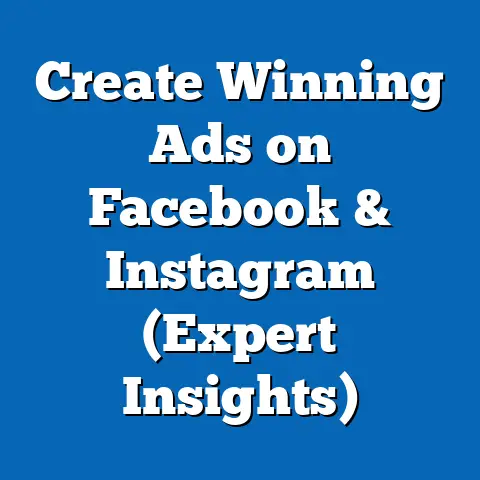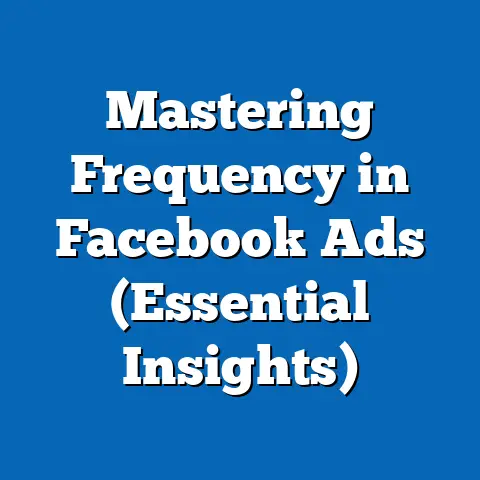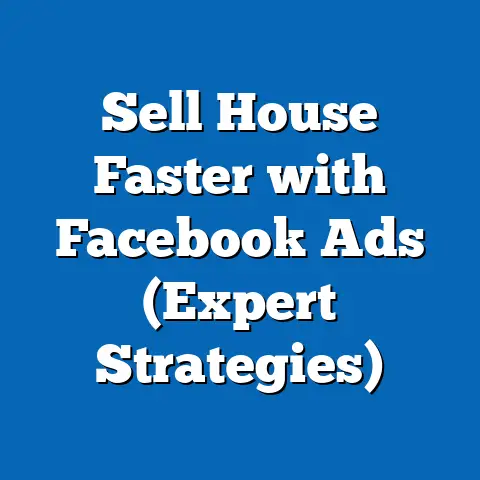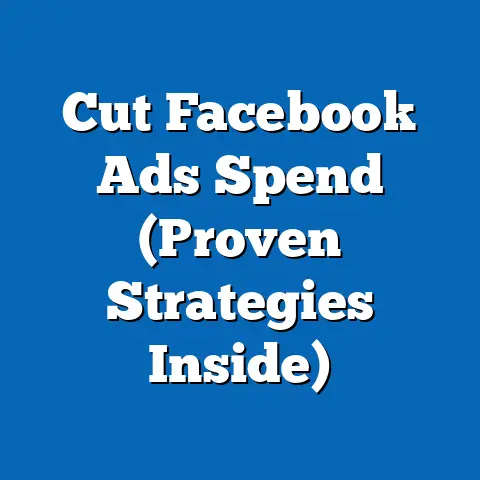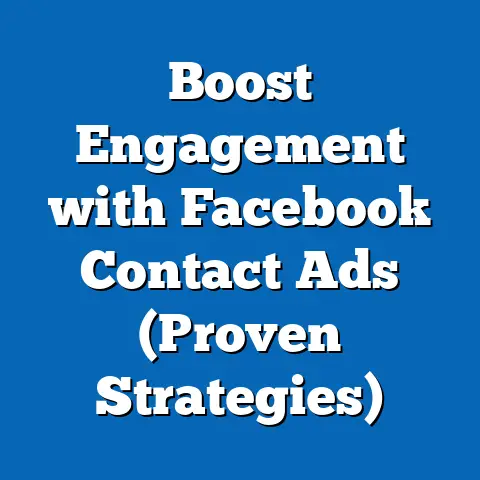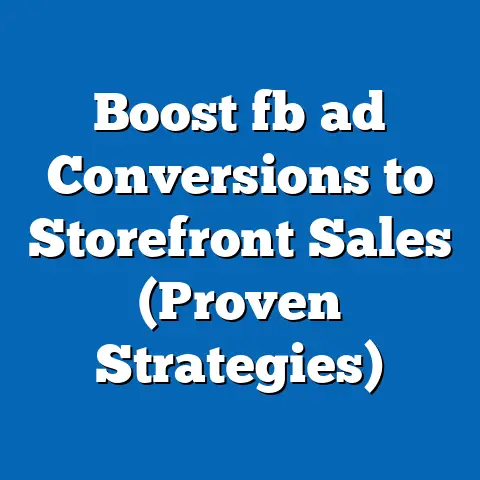Craft a Free Facebook Page Ad That Converts (Proven Techniques)
Have you ever poured your heart and soul into crafting the perfect Facebook ad, only to be met with the digital equivalent of crickets? I know I have. It’s a frustrating experience, and I’ve seen countless entrepreneurs and small business owners throw their hands up in despair, feeling like they’re shouting into a void. The truth is, the digital advertising space is incredibly crowded. Standing out feels like an impossible task, especially when you’re competing with massive brands with equally massive budgets. The disappointment of low engagement and conversion rates can be disheartening, making you question whether Facebook advertising is even worth the effort. It can feel like a gamble, throwing money into a black hole and hoping something sticks.
But here’s the thing: Facebook remains one of the most powerful marketing platforms available. It’s where billions of people spend their time, connecting with friends, family, and, yes, businesses. The problem isn’t the platform itself; it’s often the approach. Many businesses focus solely on paid ads, neglecting the potential of their own Facebook Page.
That’s why I’m writing this guide. I’m going to unveil proven techniques for crafting free Facebook page ads that not only grab attention but also convert viewers into loyal customers. We’re not talking about magic tricks or overnight success. We’re talking about understanding the platform, knowing your audience, and crafting compelling content that resonates. Forget the feeling of defeat. By the end of this article, you’ll have the tools and knowledge to create Facebook Page ads that drive real results, without breaking the bank. Let’s turn those crickets into a chorus of engagement!
Understanding the Facebook Ad Landscape
The world of Facebook ads has undergone a dramatic evolution since its inception. What started as simple banner ads has transformed into a complex ecosystem of targeting options, ad formats, and algorithms. Today, Facebook ads are a cornerstone of digital marketing strategies for businesses of all sizes. They offer unparalleled reach, precise targeting capabilities, and a wealth of data to track performance and optimize campaigns.
However, navigating this landscape can be daunting, especially for those new to the platform. It’s crucial to understand the difference between paid ads and organic reach, and to appreciate the value of both. Paid ads are, of course, the sponsored content that appears in users’ newsfeeds and other placements. These ads allow you to reach a specific audience based on demographics, interests, behaviors, and more.
Organic reach, on the other hand, refers to the number of people who see your content without you paying for distribution. This includes followers of your Facebook Page, as well as their friends who may see your content if it’s shared or liked. While organic reach has declined in recent years due to algorithm changes, it’s still a valuable source of visibility and engagement.
Free Facebook Page ads are simply organic posts that are designed to be engaging and informative and which encourage interaction. These posts are a key part of growing your organic reach and building a community around your brand. While they don’t have the same targeting capabilities as paid ads, they can be highly effective in reaching your existing audience and attracting new followers.
The key to success with free Facebook Page ads is to focus on providing value to your audience. This means creating content that is informative, entertaining, or inspiring. It also means understanding what your audience is interested in and tailoring your content accordingly.
Central to any Facebook ad strategy, whether paid or free, is the concept of conversion. Conversion refers to the desired action that you want users to take after seeing your ad. This could be anything from visiting your website to making a purchase to signing up for your email list. Without a clear conversion goal, your ads are unlikely to be effective.
According to recent statistics, businesses that use Facebook ads effectively see a significant increase in brand visibility and sales. For example, a study by HubSpot found that companies that actively engage on Facebook generate 4x more leads than those that don’t. Another study by Statista found that Facebook is the most popular social media platform for businesses to advertise on, with 93% of marketers using it for their campaigns.
Key Takeaway: Understanding the difference between paid and organic reach, focusing on providing value, and defining clear conversion goals are essential for success with Facebook Page ads.
Key Elements of a High-Converting Facebook Page Ad
Creating a Facebook Page ad that converts requires more than just throwing up a pretty picture and hoping for the best. It’s about carefully crafting a message that resonates with your audience and motivates them to take action. Here are the key elements that you need to consider:
Compelling Visuals
In the fast-paced world of social media, visuals are king. Your ad has just a few seconds to grab someone’s attention as they scroll through their newsfeed. That’s why it’s crucial to use eye-catching images or videos that stand out from the crowd.
Think about what kind of visuals will resonate with your target audience. Are they drawn to bright colors and bold designs? Or do they prefer more subtle and sophisticated imagery? Consider the overall aesthetic of your brand and create visuals that are consistent with your brand identity.
For example, if you’re selling fitness products, you might use images of people working out and achieving their fitness goals. If you’re selling travel packages, you might use stunning photos of exotic destinations. The key is to use visuals that are relevant to your product or service and that will capture the attention of your target audience.
I remember working with a local bakery that was struggling to get traction on Facebook. Their initial posts were just text-based updates about their daily specials. We decided to revamp their visual strategy and start posting mouthwatering photos of their pastries and cakes. The results were immediate. Engagement skyrocketed, and they started receiving more orders than ever before.
Strong Copywriting
While visuals are important, they’re not enough on their own. You also need to write persuasive ad copy that speaks to your audience’s pain points and desires. Your ad copy should be clear, concise, and compelling.
Start with a powerful headline that grabs attention and clearly communicates the value proposition of your product or service. Then, write engaging body text that expands on the headline and provides more details. Be sure to highlight the benefits of your product or service, rather than just the features.
Finally, include a convincing call-to-action (CTA) that tells people what you want them to do next. Use strong action verbs like “Shop Now,” “Learn More,” or “Sign Up Today.” Make your CTA clear and easy to understand.
I’ve found that asking questions in the ad copy can be a great way to engage the audience. For example, instead of saying “Our new product is amazing,” you could say “Are you tired of [problem]? Our new product can help!”
Target Audience Identification
You can have the most beautiful visuals and the most persuasive copy in the world, but if you’re not targeting the right audience, your ads will fall flat. That’s why it’s essential to know your audience inside and out.
Who are they? What are their interests? What are their pain points? What are their goals? The more you know about your audience, the better you’ll be able to tailor your ads to their specific needs and desires.
Use Facebook’s targeting options to narrow down your audience based on demographics, interests, behaviors, and more. You can also create custom audiences based on your existing customer data or website traffic.
I once worked with a clothing boutique that was struggling to reach new customers. We analyzed their existing customer base and discovered that most of their customers were women between the ages of 25 and 45 who were interested in fashion, travel, and healthy living. We then created a custom audience based on these demographics and interests. The results were amazing. Their ads reached a highly targeted audience, and their sales increased dramatically.
Utilizing Facebook Insights
Facebook Insights is a powerful tool that allows you to analyze audience engagement and ad performance. Use it to track key metrics like reach, engagement, and conversions. This data will help you understand what’s working and what’s not, so you can refine your ads and improve your results.
Pay attention to which ads are generating the most engagement and which ones are falling flat. Analyze the demographics and interests of the people who are engaging with your ads. Use this information to create even more targeted ads in the future.
I regularly check Facebook Insights to see how my ads are performing. I look at metrics like click-through rate (CTR), cost per click (CPC), and conversion rate. If I see that an ad is underperforming, I’ll tweak the visuals, the copy, or the targeting to see if I can improve its results.
Key Takeaway: Compelling visuals, strong copywriting, targeted audience identification, and the use of Facebook Insights are all essential elements of a high-converting Facebook Page ad.
Proven Techniques to Create a Facebook Page Ad That Converts
Now that we’ve covered the key elements of a high-converting Facebook Page ad, let’s dive into some proven techniques that you can use to create ads that drive real results:
Technique 1: Storytelling in Ads
People are naturally drawn to stories. Stories can create an emotional connection with your audience, making them more likely to engage with your ad and take action.
Think about how you can incorporate storytelling into your ads. Share a personal anecdote about how your product or service has helped you or someone else. Tell a story about a customer who has achieved success using your product or service.
The key is to make your story relatable and authentic. Don’t try to be someone you’re not. Just be yourself and share your experiences in a genuine way.
I remember seeing a Facebook ad from a local coffee shop that told the story of how the owner had always dreamed of opening his own cafe. He had worked tirelessly to make his dream a reality, and he was now sharing his passion with the community. The ad was incredibly heartwarming, and it made me want to support his business.
Step-by-Step Guide to Incorporating Storytelling into Ads:
- Identify your core message: What do you want people to take away from your story?
- Choose a relatable protagonist: Who is the main character in your story? Make sure they’re someone your audience can connect with.
- Create a compelling narrative: What is the conflict or challenge that your protagonist faces? How do they overcome it?
- Highlight the transformation: How has your protagonist changed as a result of their experience?
- Connect the story to your product or service: How does your product or service help your protagonist achieve their goals?
- End with a call to action: What do you want people to do after hearing your story?
Technique 2: Social Proof and Testimonials
People are more likely to trust recommendations from other people than they are to trust advertising claims. That’s why social proof and testimonials are so powerful.
If you have happy customers, don’t be afraid to showcase their testimonials in your ads. Share quotes from positive reviews. Post photos of customers using your product or service.
You can also use social proof in other ways. For example, you can highlight the number of people who have purchased your product or service. You can showcase awards or recognition that you’ve received. You can even feature user-generated content in your ads.
I’ve found that video testimonials are particularly effective. Seeing and hearing someone talk about their positive experience with your product or service can be incredibly persuasive.
Examples of How to Incorporate Testimonials and User-Generated Content into Ads:
- Quote a positive review: “I absolutely love this product! It’s made my life so much easier.” – Jane Doe
- Share a customer photo: Post a photo of a customer using your product or service with their permission.
- Create a video testimonial: Ask a happy customer to record a short video talking about their experience with your product or service.
- Feature user-generated content: Share photos or videos that your customers have posted on social media using your product or service.
Technique 3: Eye-Catching Ad Formats
Facebook offers a variety of ad formats that you can use to capture attention and engage your audience. Experiment with different formats to see what works best for your business.
- Carousel ads: Carousel ads allow you to showcase multiple images or videos in a single ad. This is a great way to highlight different features of your product or service or to tell a story in a visual way.
- Slideshow ads: Slideshow ads are similar to carousel ads, but they use a series of still images that are displayed in a slideshow format. This is a great way to create a visually appealing ad without having to invest in video production.
- Collection ads: Collection ads are designed for e-commerce businesses. They allow you to showcase multiple products in a visually appealing format. When someone clicks on a collection ad, they’re taken to a full-screen experience where they can browse your products and make a purchase.
I’ve found that carousel ads are particularly effective for showcasing different features of a product or service. For example, if you’re selling a software product, you could use a carousel ad to highlight the key benefits of each feature.
When to Use Each Ad Format for Maximum Effect:
- Carousel ads: Use carousel ads when you want to showcase multiple products, features, or benefits.
- Slideshow ads: Use slideshow ads when you want to create a visually appealing ad without having to invest in video production.
- Collection ads: Use collection ads when you want to showcase multiple products and drive sales.
Technique 4: A/B Testing
A/B testing is a powerful technique that allows you to optimize your ad performance by testing different versions of your ads.
Create two or more versions of your ad with slight variations. For example, you could test different headlines, different visuals, or different calls to action. Then, run your ads and see which version performs best.
Use the data from your A/B tests to refine your ads and improve your results. Continuously test different variations to see what resonates with your audience.
I always A/B test my ads to see what works best. I’ve found that even small changes can have a big impact on performance. For example, changing the headline of an ad can sometimes double its click-through rate.
- Choose an element to test: What aspect of your ad do you want to test? This could be the headline, the visual, the copy, or the call to action.
- Create two or more variations: Create two or more versions of your ad with slight variations of the element you’re testing.
- Set up your A/B test: Use Facebook’s A/B testing tool to set up your test. Choose your target audience, your budget, and your duration.
- Run your ads: Run your ads and let the A/B test run its course.
- Analyze the results: After the test is complete, analyze the results to see which version performed best.
- Implement the winning variation: Implement the winning variation in your ad campaign.
Technique 5: Engaging with Your Audience
Building a loyal following on Facebook is about more than just posting ads. It’s about engaging with your audience and building relationships.
Encourage comments, shares, and likes on your ads. Respond to comments and answer questions. Run contests and giveaways to generate excitement and engagement.
The more you engage with your audience, the more likely they are to become loyal customers.
I make it a point to respond to every comment on my Facebook ads. I see it as an opportunity to connect with my audience and build relationships. I also run contests and giveaways on a regular basis to generate excitement and engagement.
Strategies for Encouraging Comments, Shares, and Likes on Ads:
- Ask questions: Ask questions in your ad copy to encourage people to comment.
- Run contests and giveaways: Run contests and giveaways to generate excitement and engagement.
- Respond to comments: Respond to comments and answer questions to show that you care about your audience.
- Use engaging visuals: Use visuals that are likely to generate comments, shares, and likes.
- Create a sense of community: Create a sense of community around your brand by encouraging people to connect with each other.
Key Takeaway: Storytelling, social proof, eye-catching ad formats, A/B testing, and audience engagement are all proven techniques that you can use to create Facebook Page ads that convert.
Case Studies of Successful Facebook Page Ads
Let’s take a look at some real-world examples of businesses that have successfully used free Facebook Page ads to drive conversions. By analyzing these case studies, we can gain valuable insights into what works and what doesn’t.
Case Study 1: Local Restaurant
A local restaurant was struggling to attract new customers. They decided to create a Facebook Page ad featuring a mouthwatering photo of their signature dish. The ad copy highlighted the fresh, local ingredients they used and invited people to come in and try it.
The ad was a huge success. It generated a lot of engagement, with people commenting, sharing, and liking the post. The restaurant also saw a significant increase in foot traffic.
Analysis:
- Compelling Visuals: The ad featured a high-quality photo of the restaurant’s signature dish.
- Strong Copywriting: The ad copy highlighted the fresh, local ingredients used in the dish.
- Clear Call to Action: The ad invited people to come in and try the dish.
Case Study 2: Online Clothing Boutique
An online clothing boutique wanted to increase sales. They created a Facebook Page ad featuring a carousel of their latest arrivals. The ad copy highlighted the trendy styles and affordable prices.
The ad was very effective. It generated a lot of clicks and led to a significant increase in sales.
Analysis:
- Eye-Catching Ad Format: The ad used a carousel format to showcase multiple products.
- Targeted Audience: The ad was targeted to women who were interested in fashion.
- Clear Value Proposition: The ad highlighted the trendy styles and affordable prices.
Case Study 3: Local Gym
A local gym wanted to attract new members. They created a Facebook Page ad featuring a video testimonial from a happy member. The video testimonial talked about how the gym had helped her achieve her fitness goals.
The ad was very persuasive. It generated a lot of leads and led to a significant increase in memberships.
Analysis:
- Social Proof: The ad featured a video testimonial from a happy member.
- Emotional Connection: The video testimonial created an emotional connection with the audience.
- Clear Call to Action: The ad invited people to sign up for a free trial.
Insights from Business Owners:
- “We were surprised at how effective our Facebook Page ad was. It generated a lot of buzz and brought in a ton of new customers.” – Restaurant Owner
- “We’ve seen a huge increase in sales since we started using Facebook Page ads. It’s a great way to reach our target audience and drive conversions.” – Clothing Boutique Owner
- “The video testimonial was a game-changer for us. It helped us build trust and credibility, and it led to a significant increase in memberships.” – Gym Owner
Key Takeaway: These case studies demonstrate the power of free Facebook Page ads to drive conversions. By using compelling visuals, strong copywriting, targeted audience identification, and proven techniques like storytelling and social proof, you can create ads that generate real results.
Conclusion
Creating a converting Facebook Page ad doesn’t have to be an overwhelming task. By understanding the key elements of a high-converting ad and applying the proven techniques outlined in this article, you can create ads that grab attention, engage your audience, and drive real results.
Remember to focus on providing value to your audience. Create content that is informative, entertaining, or inspiring. Tailor your ads to their specific needs and desires.
Engage with your audience by responding to comments, answering questions, and running contests and giveaways. Build relationships and create a sense of community around your brand.
By engaging with your audience effectively, you can increase conversions and business growth. Facebook Page ads can be a powerful tool for reaching your target audience and driving sales.
Call to Action
Now it’s your turn! Start crafting your Facebook Page ads using the strategies provided in this article. Share your results and experiences in the comments or on social media to foster a community of learning and support among fellow entrepreneurs. Let’s work together to unlock the full potential of Facebook advertising!

